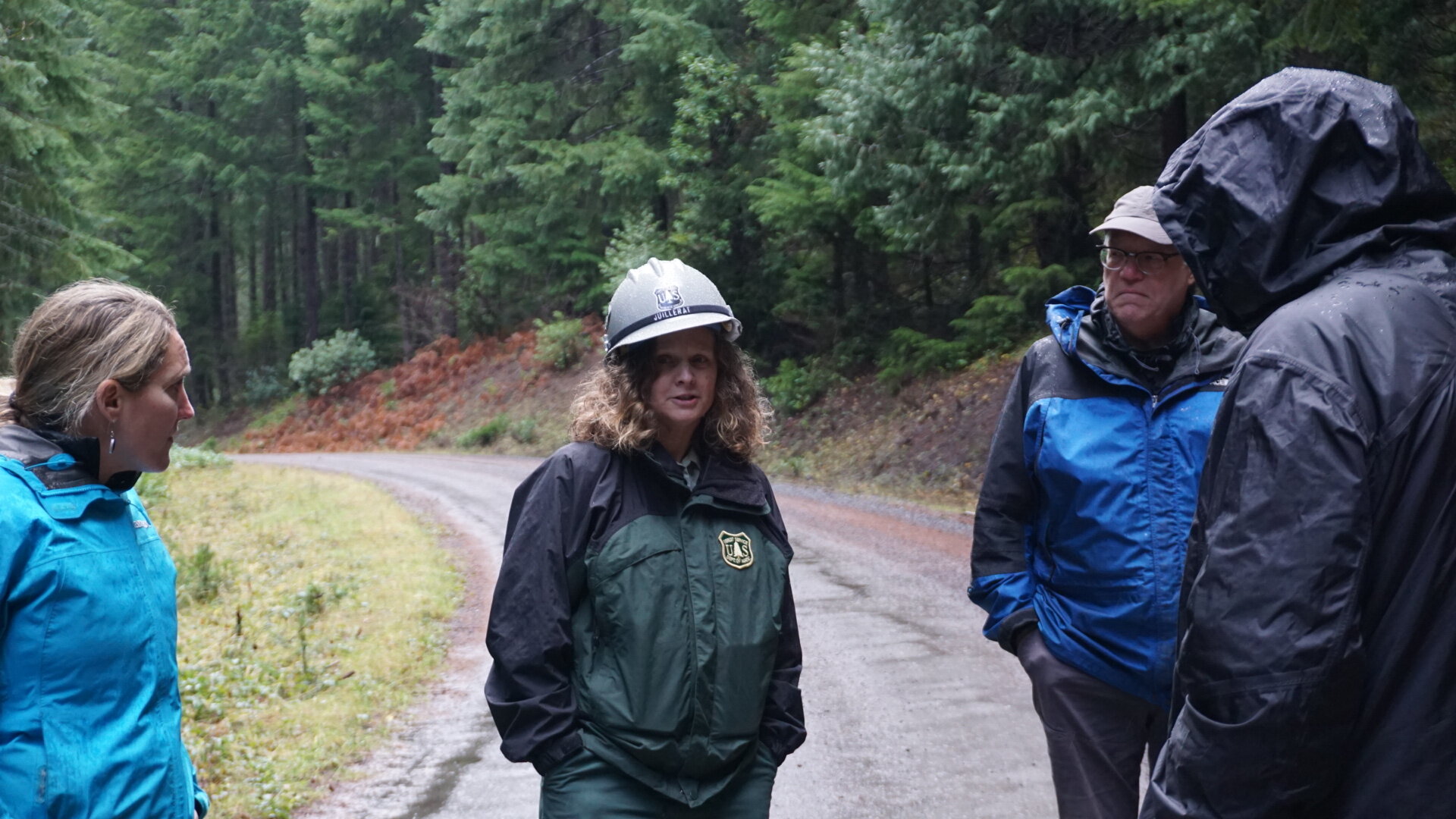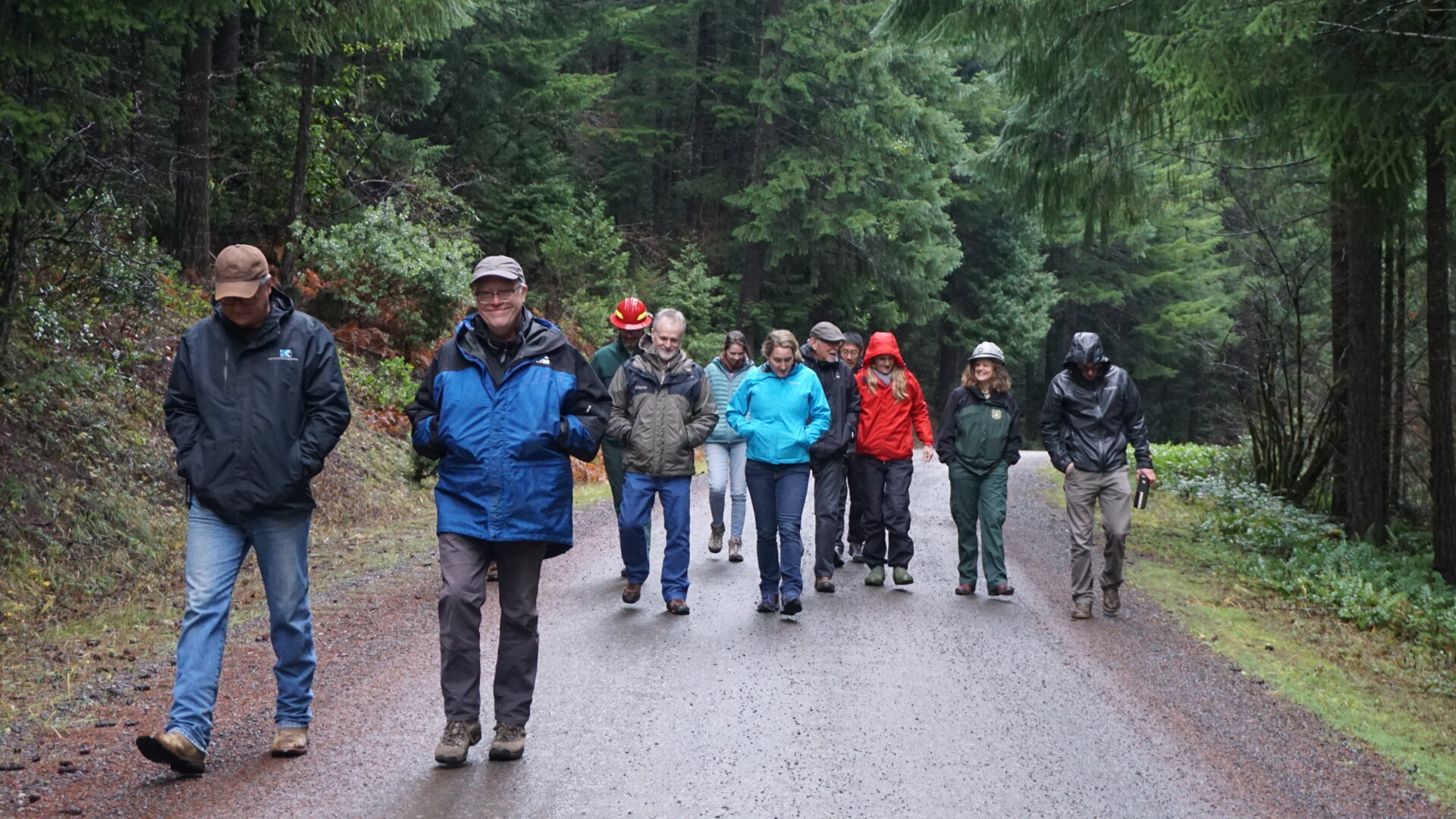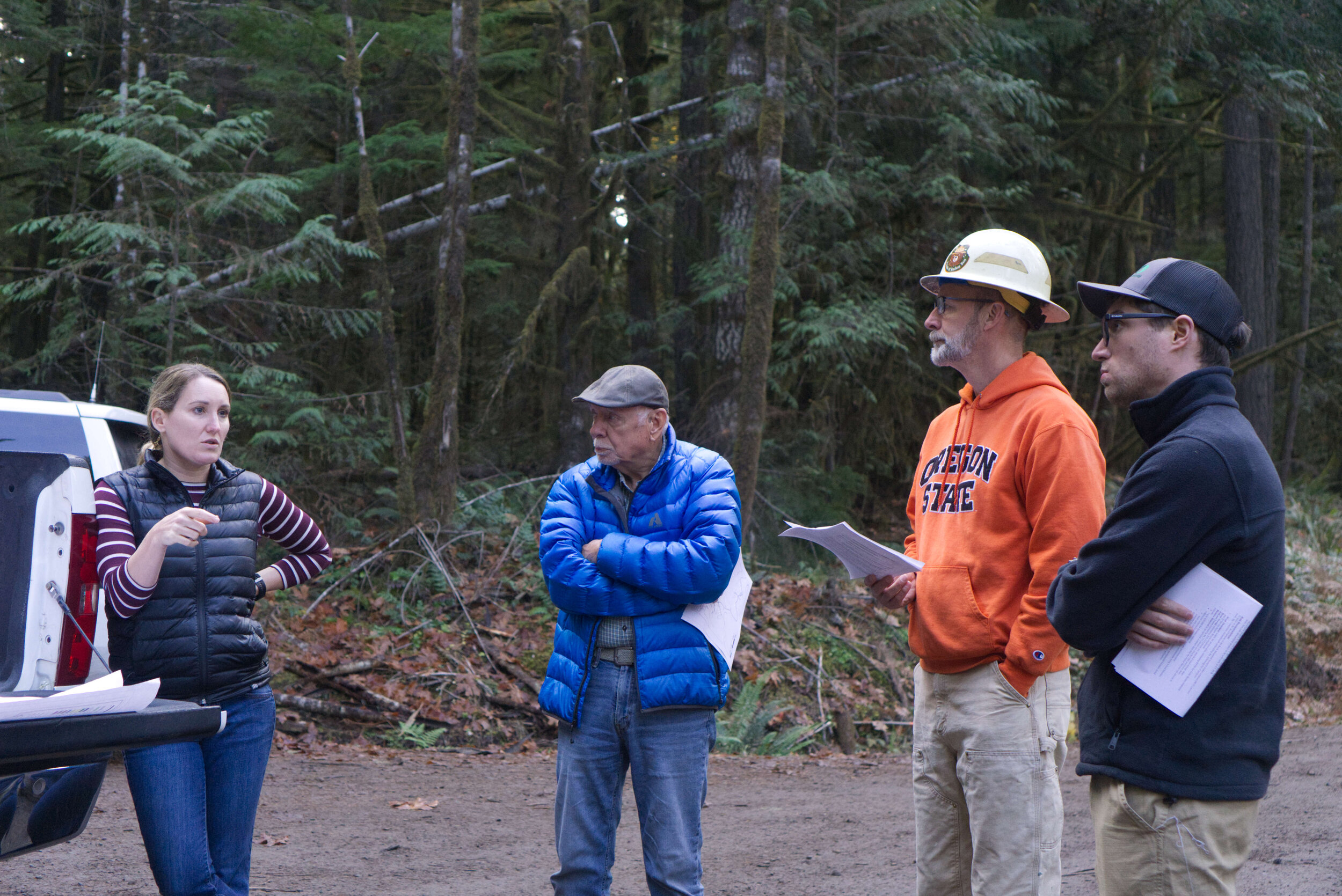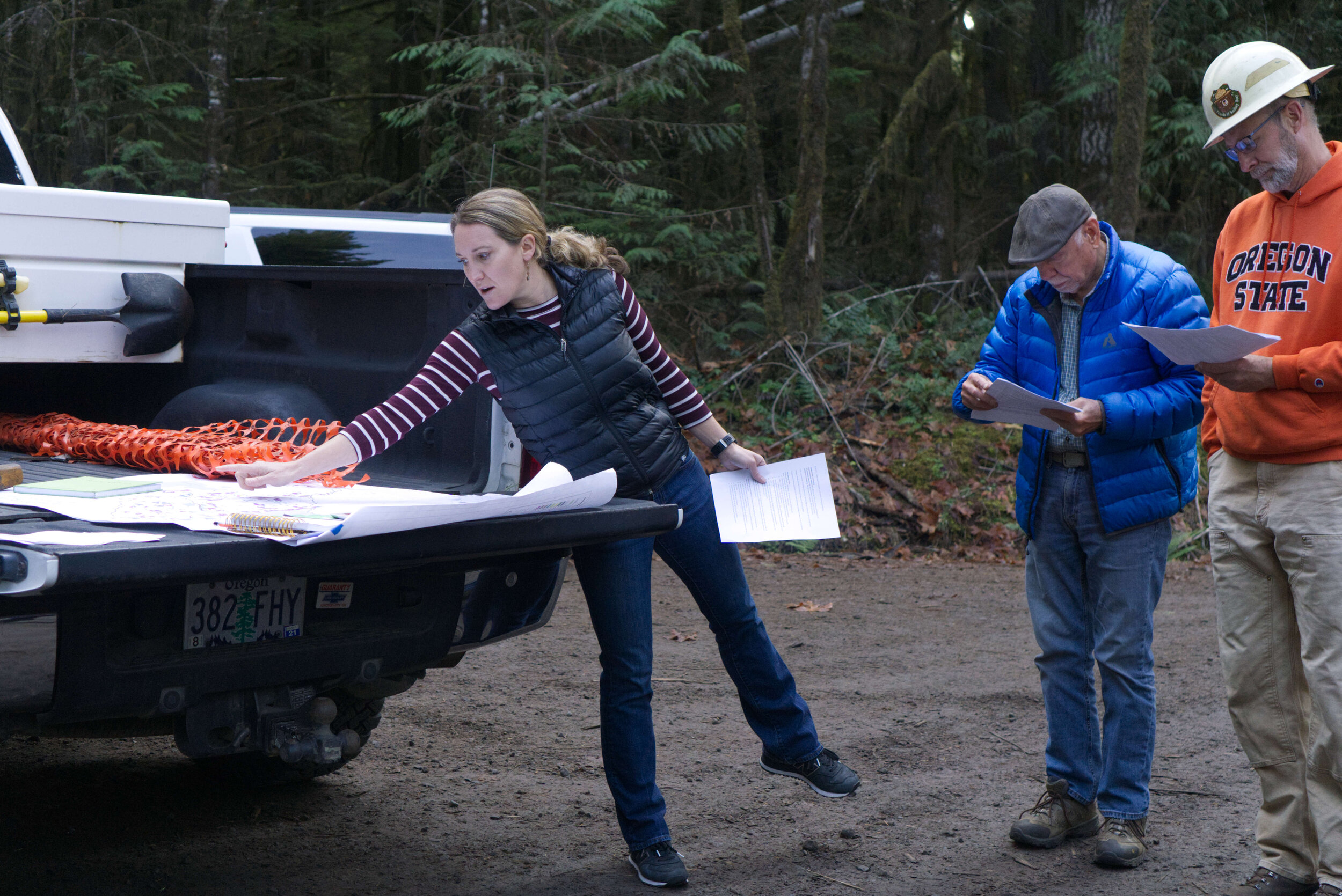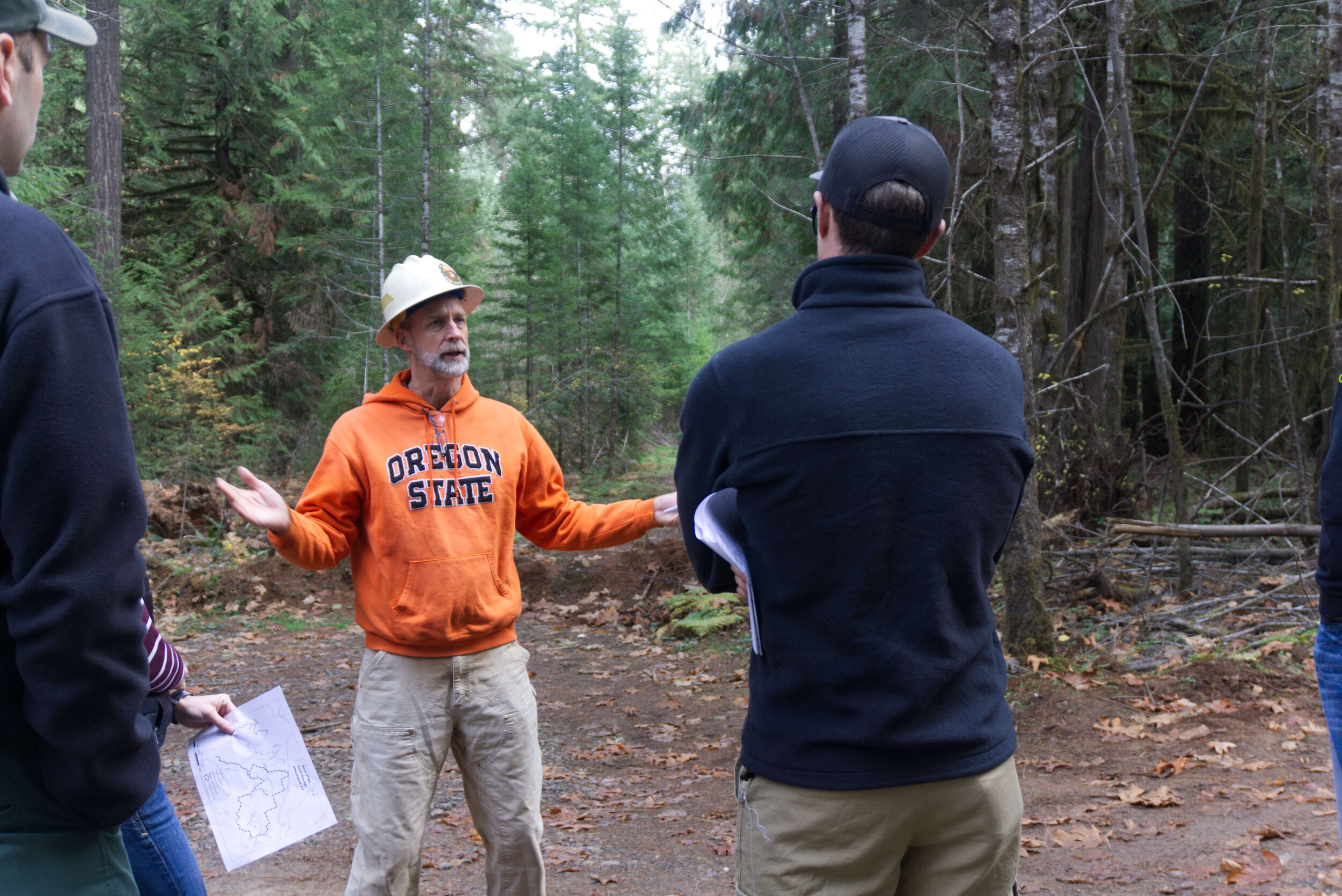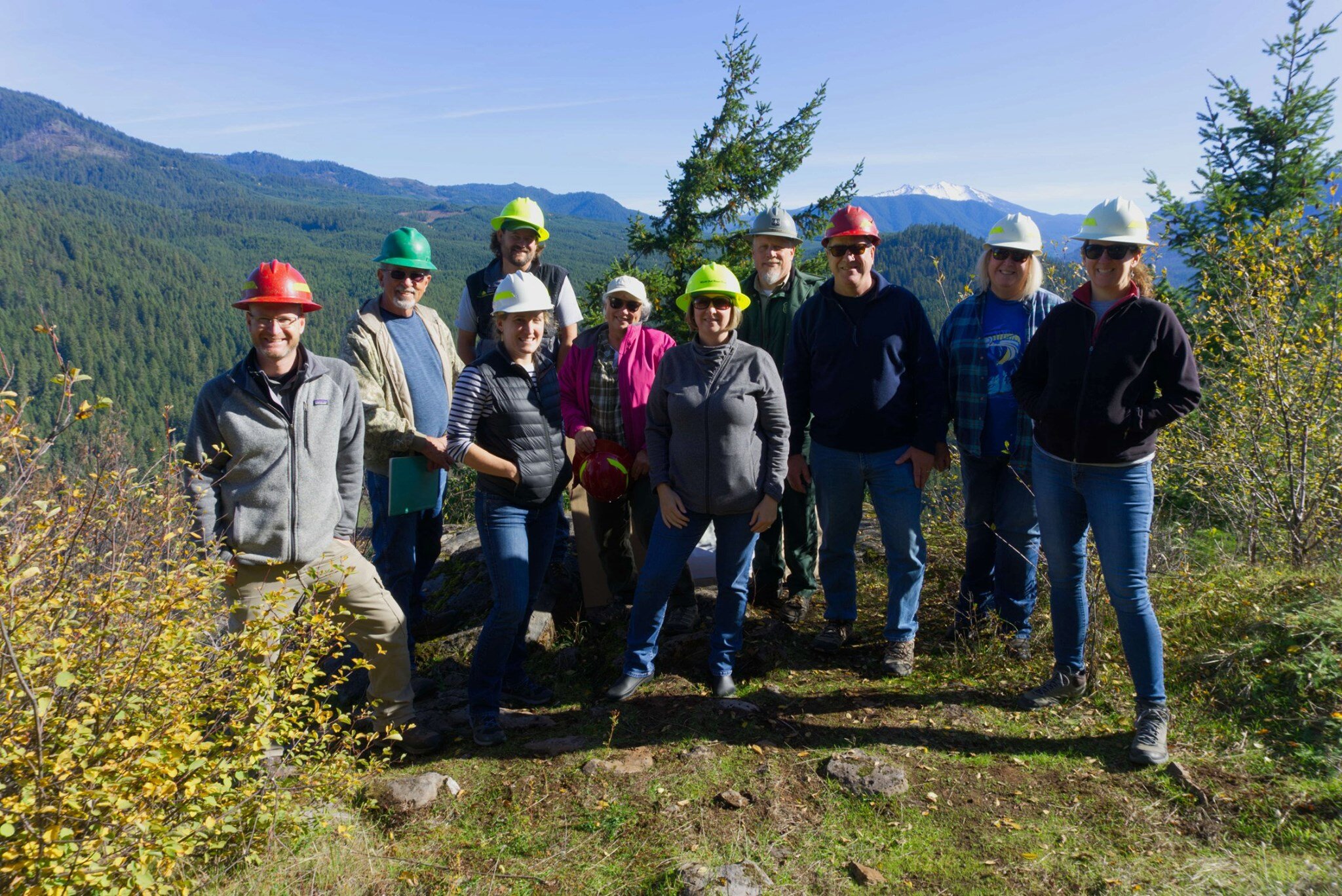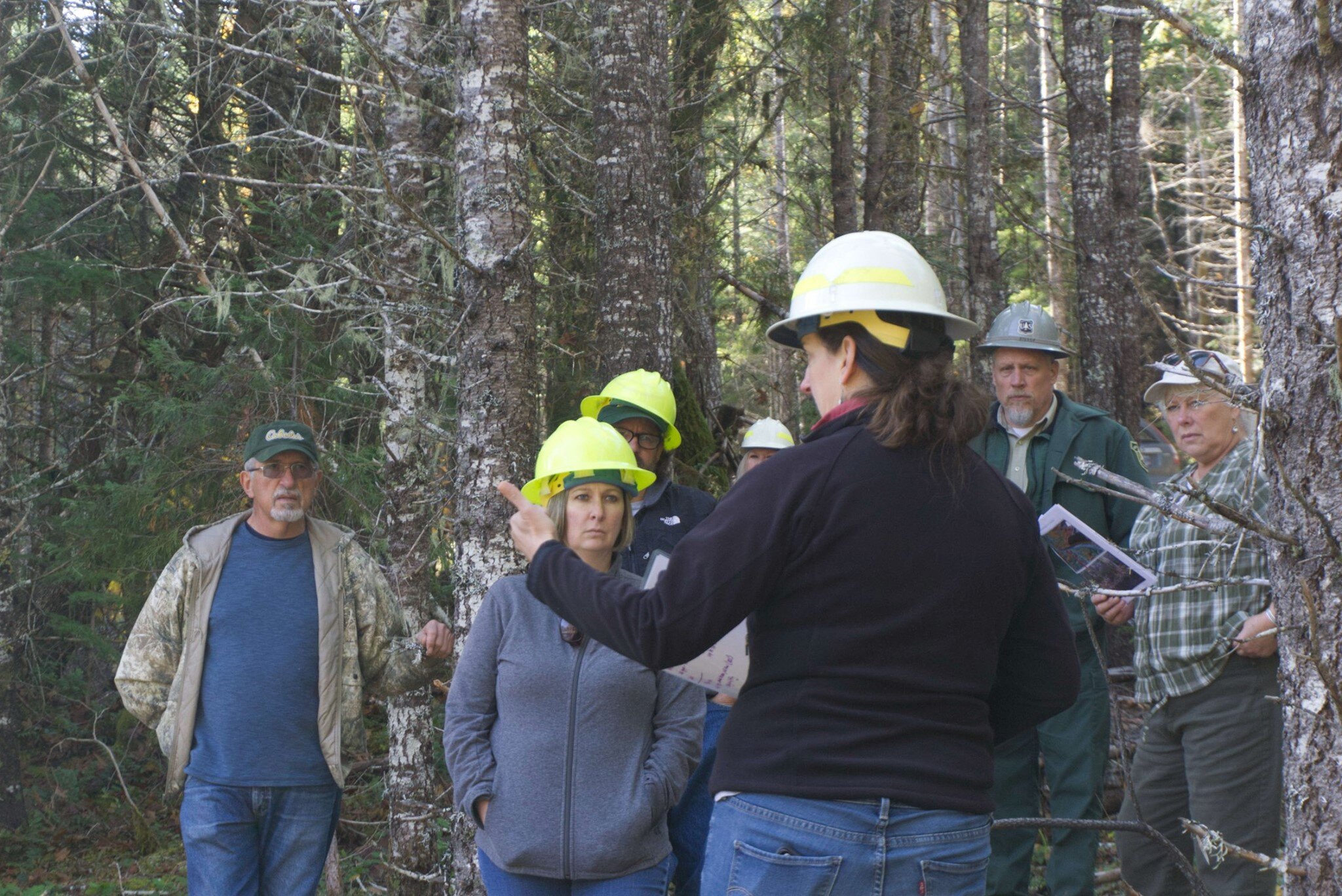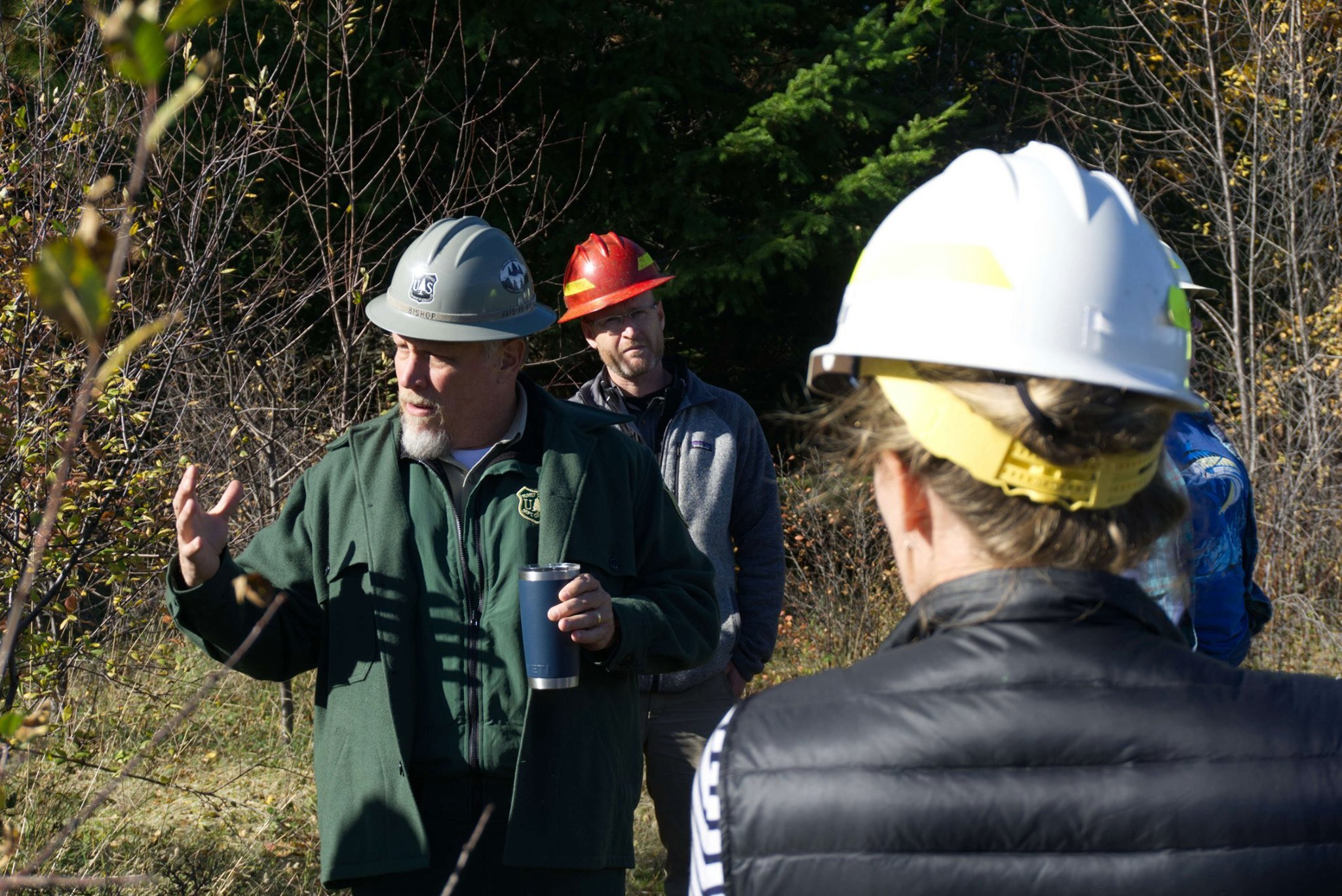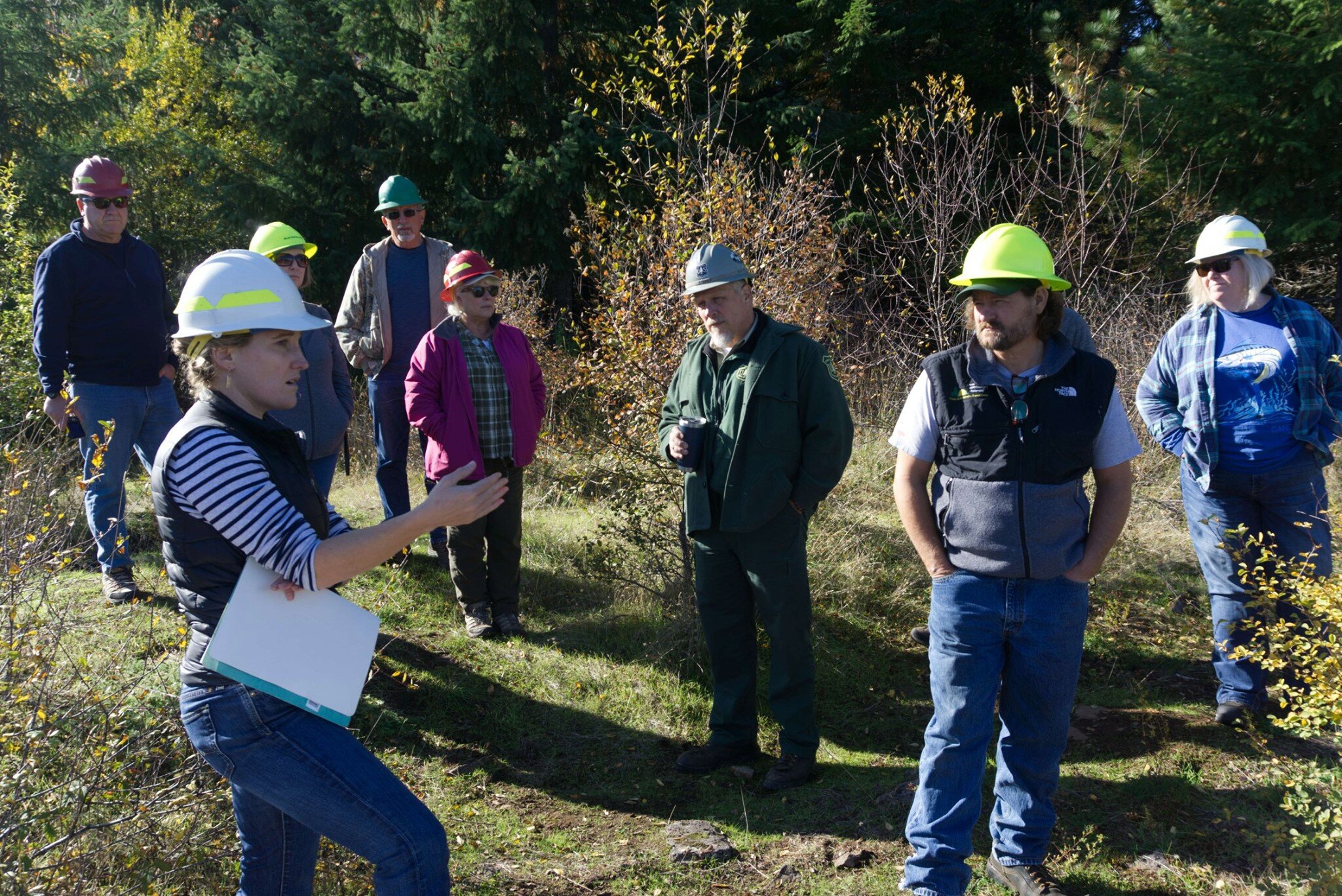Members from the Southern Willamette Forest Collaborative attended the PNW Collaboratives Workshop in Hood River - 8 members are on the leadership team for SWFC, while 4 members represented their organizations while at the conference. Collaborative members participated in this two day event, attending over 12-hours of facilitated learning on a variety of topics - see topics below! Folks who collaborate with SWFC also sat on panels during the conference.
Westside Restoration Outside of Plantations: Special Habitat Types
SWFC Facilitator Sarah Altemus-Pope paneled for the Westside Restoration Outside of Plantations: Special Habitat Types learning session, alongside other collaborative members James Johnston with Oregon State University, and Molly Juillerat from Middle Fork Ranger District representing the Willamette National Forest - the panel focused on forest restoration projects on westside Northwest Forest Plan areas in Matrix and Late Successional Reserves, with a special emphasis on special habitat types.
Living with Fire in Dry Forests
Collaborative member James Johnston with Oregon State University also paneled on Living with Fire in Dry Forests, focusing on the increased risk of severe fire, rising fire suppression costs, and novel wildfire impacts on ecosystem health, human health and property. While also focusing on how contemporary fire effects and impacts on communities compel fire suppression, but fire suppression created the problem and only makes it worse. The main question asked: how do we adapt contemporary dry forest landscapes so they are resistant to fire and drought?
Zones of Agreement: Lessons Learned
Steering Committee Member, Susan Knudsen-Obermeyer paneled for Zones of Agreement: Lessons Learned. a panel that covered the spectrum, from groups tackling their first zones of agreement to those who have revised their agreements multiple times.
Keynote Address
Mile-high collective Muddling: Collaborative forest restoration in the southern Rockies
Tony Cheng, Director, Colorado Forest Restoration Institute
Evening Keynote
Karen Hardigg, Rural Voices for Conservation Coalition
Forest Policy Panel
Nicholas Goldstein, USDA Forest Service
Chuck, Washington Department of Natural Resources
Chad Davis, Oregon Department of Forestry
Dylan Kruse, Sustainable Northwest
Breakout Session #1
Forest Collaboration 101
Lessons from Landscape-Scale Projects
Improving & Scaling Aquatic Restoration
Connecting Markets with Restoration Wood
Breakout Session #2
Breakout Session #3
Westside Restoration Outside of Plantations: Special Habitat Types
Zones of Agreement: Lessons Learned
Biomass Summit: Review & Next Steps
Breakout Session #4
Ecological Functions of Spatial Pattern in Dry Forests
Diversity, Equity, and Inclusion in Forest Collaboratives
Forest Restoration & Climate Change



